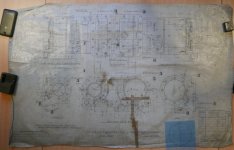dazz
Stainless
- Joined
- Aug 20, 2006
- Location
- New Zealand
Hi
The application is a miniature 1/3 scale model of a 1925 Steam Lorry that I plan to build. It has a 2 cylinder compound steam engine. The cylinders and pistons in the original were cast iron.
Traditionally model steam engines are CI, gun metal or brass. If I go to the model engineering forums, that is what I will be told.
The question I have for this forum relates to materials selection and compatibility.
I want to use cast stainless steel because:
The major disadvantage I know of is the willingness of SS to gall and scour. To reduce this risk, I propose to use carbon PTFE rings with a soft metal piston (eg brass).
To reduce the risk of cylinder galling, I would like to look at options around passivizing/coating the SS cylinder walls (eg.nitriding).
I have outlined what I propose, but is there a better solution?
Below is a photograph of the steam wagon on the wharf in the UK, prior to loading and shipping to New Zealand. Also, the original factory drawing of the engine.
Dazz
The application is a miniature 1/3 scale model of a 1925 Steam Lorry that I plan to build. It has a 2 cylinder compound steam engine. The cylinders and pistons in the original were cast iron.
Traditionally model steam engines are CI, gun metal or brass. If I go to the model engineering forums, that is what I will be told.
The question I have for this forum relates to materials selection and compatibility.
I want to use cast stainless steel because:
- it won't corrode,
- it is a poor thermal conductor (makes for more efficient engine) and,
- the local foundry can cast it.
The major disadvantage I know of is the willingness of SS to gall and scour. To reduce this risk, I propose to use carbon PTFE rings with a soft metal piston (eg brass).
To reduce the risk of cylinder galling, I would like to look at options around passivizing/coating the SS cylinder walls (eg.nitriding).
I have outlined what I propose, but is there a better solution?
Below is a photograph of the steam wagon on the wharf in the UK, prior to loading and shipping to New Zealand. Also, the original factory drawing of the engine.
Dazz




